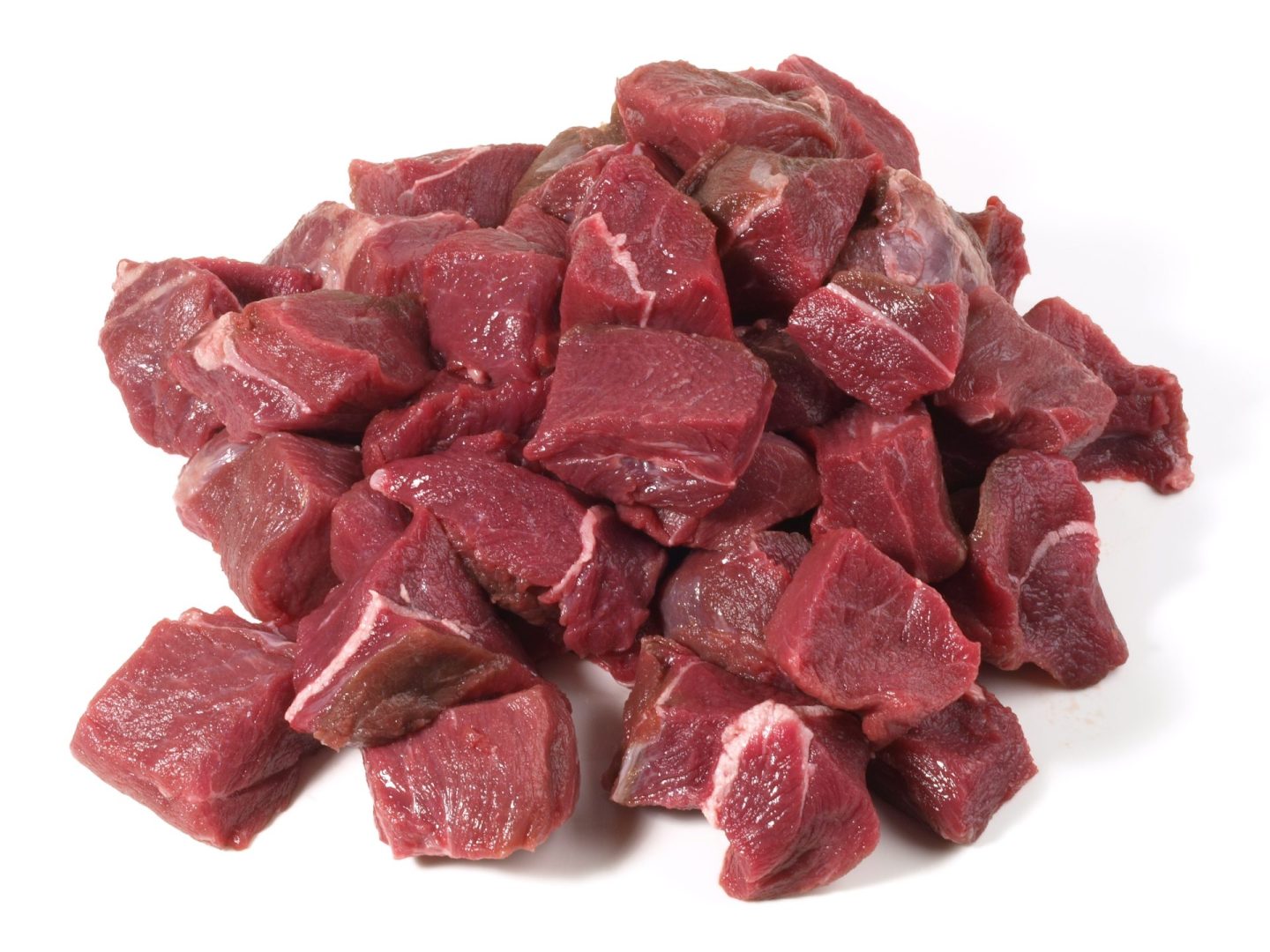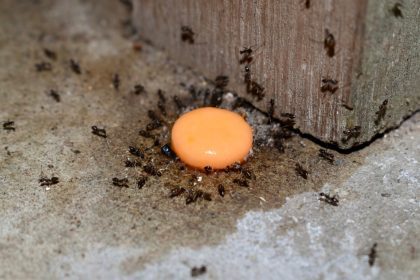A single tick bite is now capable of transforming lifelong meat enthusiasts into individuals who must completely avoid red meat or face potentially life-threatening allergic reactions, marking one of the most unusual and rapidly spreading consequences of tick-borne illness in modern medical history. Alpha-gal syndrome represents a fundamentally different type of food allergy that develops not from childhood sensitivities but from exposure to tick saliva containing a specific sugar molecule that triggers the human immune system to attack mammalian meat proteins.
This bizarre medical phenomenon challenges everything people understand about food allergies, as it develops suddenly in adulthood and creates delayed reactions that occur hours after consuming red meat, making the connection between symptoms and dietary choices difficult to recognize initially. The condition affects thousands of Americans annually, with numbers rising dramatically as tick populations expand their geographic range due to climate change and habitat modifications.
The implications of alpha-gal syndrome extend far beyond individual dietary restrictions to affect entire families, social gatherings, and cultural traditions centered around meat consumption. People who once enjoyed barbecues, steakhouses, and traditional holiday meals must navigate a completely transformed relationship with food while managing the constant vigilance required to avoid potentially fatal allergic reactions.
Lone star ticks carry mysterious meat allergy trigger
The primary culprit behind alpha-gal syndrome, the lone star tick, injects a sugar molecule called galactose-alpha-1,3-galactose into human bloodstreams during feeding, inadvertently training the immune system to recognize this naturally occurring mammalian meat component as a dangerous foreign substance. This sugar molecule exists throughout red meat from mammals including beef, pork, lamb, and venison, making it impossible for affected individuals to consume these foods safely.
The lone star tick’s expanding geographic range has brought alpha-gal syndrome to new regions where the condition was previously unknown, creating unexpected outbreaks of meat allergies in communities with strong hunting and barbecue traditions. Climate change and habitat destruction have contributed to increased human-tick encounters as these parasites move into suburban and residential areas where people spend time outdoors.
The feeding behavior of lone star ticks makes them particularly effective at transmitting alpha-gal syndrome, as they remain attached to hosts for extended periods while injecting saliva containing the problematic sugar molecule. Female ticks, which require blood meals for reproduction, are especially likely to cause alpha-gal sensitization due to their aggressive feeding behavior and longer attachment times.
The seasonal activity patterns of lone star ticks create predictable risk periods for alpha-gal syndrome development, with peak transmission occurring during warm months when both ticks and humans are most active outdoors. Understanding these patterns helps individuals in affected areas take appropriate precautions during high-risk periods.
Delayed reactions complicate diagnosis and treatment
Alpha-gal syndrome creates uniquely challenging diagnostic scenarios because allergic reactions typically occur three to six hours after consuming red meat, making the connection between symptoms and dietary choices far less obvious than immediate food allergies. This delayed response pattern often leads to misdiagnosis and unnecessary medical testing as patients and healthcare providers struggle to identify the trigger for mysterious allergic episodes.
The severity of alpha-gal reactions varies significantly between individuals and can range from mild digestive upset to life-threatening anaphylaxis requiring emergency intervention. Some people experience hives, swelling, and gastrointestinal distress, while others develop severe breathing difficulties and cardiovascular collapse that can prove fatal without immediate treatment.
The unpredictable nature of alpha-gal reactions adds another layer of complexity, as the same individual may tolerate small amounts of red meat on some occasions while experiencing severe reactions to similar quantities at other times. Factors like alcohol consumption, exercise, stress levels, and concurrent illnesses can influence reaction severity and timing.
The diagnostic process for alpha-gal syndrome requires specialized blood tests that measure specific antibodies to the galactose-alpha-1,3-galactose molecule, tests that many healthcare providers may not immediately consider when evaluating patients with unexplained allergic reactions. This knowledge gap can lead to prolonged diagnostic odysseys for affected individuals.
Geographic expansion creates new victim populations
The historical distribution of alpha-gal syndrome was largely concentrated in southeastern United States regions where lone star ticks were most prevalent, but expanding tick populations have brought the condition to new geographic areas including the Northeast, Midwest, and parts of the West Coast. This expansion has caught many healthcare providers and residents unprepared for managing a condition they previously considered regionally limited.
Climate change has accelerated the northward migration of lone star ticks by creating more favorable temperature and humidity conditions in previously unsuitable habitats. Warmer winters allow more ticks to survive, while extended growing seasons provide longer periods for tick activity and reproduction.
Habitat modifications including suburban development, reforestation projects, and changes in wildlife management have created new environments where lone star ticks can establish populations. These ticks thrive in edge habitats where forests meet open areas, environments that are increasingly common in suburban and exurban development patterns.
The mobility of modern populations contributes to alpha-gal syndrome spread as people travel to tick-endemic areas for recreation, work, or relocation, then return to their home communities carrying the condition. This pattern has introduced alpha-gal syndrome to areas where lone star ticks are not yet established but where healthcare providers must now learn to recognize and treat the condition.
Lifestyle transformations affect entire families
Alpha-gal syndrome diagnosis forces immediate and permanent lifestyle changes that affect not only the diagnosed individual but their entire household, as food preparation, dining choices, and social activities must be completely reorganized around avoiding mammalian meat. Families must learn to read ingredient labels carefully, as many processed foods contain hidden sources of mammalian-derived ingredients.
The social implications of alpha-gal syndrome can be profound, as affected individuals must navigate social gatherings, restaurant dining, and cultural celebrations that traditionally center around red meat consumption. Many people report feeling isolated or burdensome as they require special accommodations for meals and social events.
The economic impact includes increased food costs as individuals must purchase more expensive protein alternatives, specialized products free from mammalian ingredients, and potentially require multiple restaurant visits to find suitable dining options. The condition also creates costs associated with carrying emergency medications and seeking specialized medical care.
Children in affected families must learn to recognize safe and unsafe foods while understanding why family dietary practices have changed dramatically. This education process requires age-appropriate explanations of allergic reactions and emergency response procedures that can be overwhelming for young family members.
Hidden ingredients create constant vigilance requirements
Alpha-gal syndrome extends beyond obvious red meat sources to include numerous hidden ingredients derived from mammals, including gelatin, certain medications, vaccines, and processed foods containing mammalian-derived additives. This broader scope of restriction requires constant vigilance and extensive label reading to avoid unexpected exposures.
Gelatin represents one of the most challenging hidden sources, as it appears in candies, marshmallows, vitamins, medications, and cosmetic products where consumers might not expect mammalian ingredients. Many affected individuals must completely avoid these products or seek specialized alternatives that use plant-based ingredients.
Medication safety becomes a significant concern as many pharmaceutical products contain mammalian-derived ingredients including gelatin capsules, certain vaccines, and specialized medications that may trigger alpha-gal reactions. Working with healthcare providers to identify safe alternatives requires extensive research and communication.
Restaurant dining presents ongoing challenges as cross-contamination from cooking surfaces, shared fryers, and ingredient preparation can trigger reactions even when ordering apparently safe menu items. Many affected individuals must limit restaurant dining or choose establishments that can guarantee complete separation of mammalian and non-mammalian ingredients.
Medical community struggles with awareness and treatment
Many healthcare providers remain unfamiliar with alpha-gal syndrome despite its growing prevalence, leading to diagnostic delays and inappropriate treatment approaches that can worsen patient outcomes. The condition’s unique characteristics, including delayed reactions and tick-borne transmission, don’t fit typical allergy patterns that most physicians learn during training.
Emergency medical personnel may not immediately recognize alpha-gal reactions due to the delayed onset and variable presentation, potentially leading to inadequate treatment of severe allergic episodes. Education efforts are ongoing to improve recognition and response capabilities among first responders and emergency department staff.
Treatment options for alpha-gal syndrome remain limited to strict dietary avoidance and emergency medication management, as no curative therapies currently exist. Research into desensitization treatments and preventive approaches continues, but affected individuals must rely on avoidance strategies for symptom prevention.
The psychological impact of alpha-gal syndrome diagnosis includes anxiety about accidental exposures, social isolation due to dietary restrictions, and grief over losing favorite foods and cultural traditions. Mental health support may be necessary to help individuals adapt to their transformed relationship with food and social dining.
Prevention strategies focus on tick avoidance
Primary prevention of alpha-gal syndrome centers on avoiding tick bites through protective clothing, insect repellents, and environmental modifications that reduce tick exposure risks. These strategies become particularly important for individuals living in or visiting areas where lone star ticks are prevalent.
Effective tick prevention requires understanding tick habitat preferences and activity patterns, allowing individuals to make informed decisions about outdoor activities and take appropriate precautions during high-risk periods. Lone star ticks are most active during warm, humid conditions and prefer areas with dense vegetation and wildlife activity.
Property modifications including vegetation management, wildlife exclusion, and barrier treatments can reduce tick populations around homes and recreational areas. These interventions require ongoing maintenance and may need professional pest control services to achieve maximum effectiveness.
Regular tick checks after outdoor activities provide opportunities to remove ticks before disease transmission occurs, though the effectiveness of this approach depends on thorough inspection and proper tick removal techniques. Prompt removal within hours of attachment may prevent alpha-gal sensitization.
Research continues into treatment and prevention
Scientific research into alpha-gal syndrome continues advancing understanding of the condition’s mechanisms, risk factors, and potential treatment approaches. Current studies investigate why some individuals develop the condition after tick bites while others remain unaffected, seeking to identify genetic or environmental factors that influence susceptibility.
Therapeutic research explores potential desensitization protocols that might allow affected individuals to gradually regain tolerance to mammalian meat, though these approaches remain experimental and carry significant risks of severe allergic reactions. Clinical trials are necessary to establish safety and efficacy before such treatments become available.
Vaccine development research investigates potential preventive approaches that could protect individuals from developing alpha-gal syndrome even after tick exposure. These efforts face significant challenges including understanding the complex immune mechanisms involved and developing safe, effective immunization strategies.
Environmental research focuses on tick population dynamics, habitat requirements, and potential biological control methods that could reduce lone star tick populations and associated disease transmission risks. These approaches require long-term studies and careful evaluation of ecological impacts.
Public health implications require coordinated response
Alpha-gal syndrome represents an emerging public health challenge that requires coordinated responses from healthcare systems, public health agencies, and community organizations to improve awareness, diagnosis, and management capabilities. The condition’s rapid spread and serious health implications justify increased attention and resource allocation.
Healthcare system preparedness includes training programs for medical providers, development of diagnostic protocols, and establishment of treatment guidelines that improve patient care and outcomes. Emergency medical services require education about delayed allergic reactions and appropriate emergency response procedures.
Public awareness campaigns help individuals recognize tick bite risks and understand alpha-gal syndrome symptoms, enabling earlier diagnosis and better prevention strategies. These efforts must reach diverse populations and provide culturally appropriate information about dietary modifications and medical management.
Surveillance systems need development to track alpha-gal syndrome prevalence, geographic distribution, and trends over time. This information guides public health planning and resource allocation while identifying emerging high-risk areas that require targeted prevention efforts.
The long-term implications of alpha-gal syndrome include potential impacts on food systems, agricultural practices, and cultural traditions as affected populations grow and geographic distribution expands. Understanding and preparing for these broader societal effects requires interdisciplinary collaboration and forward-thinking policy development.
















